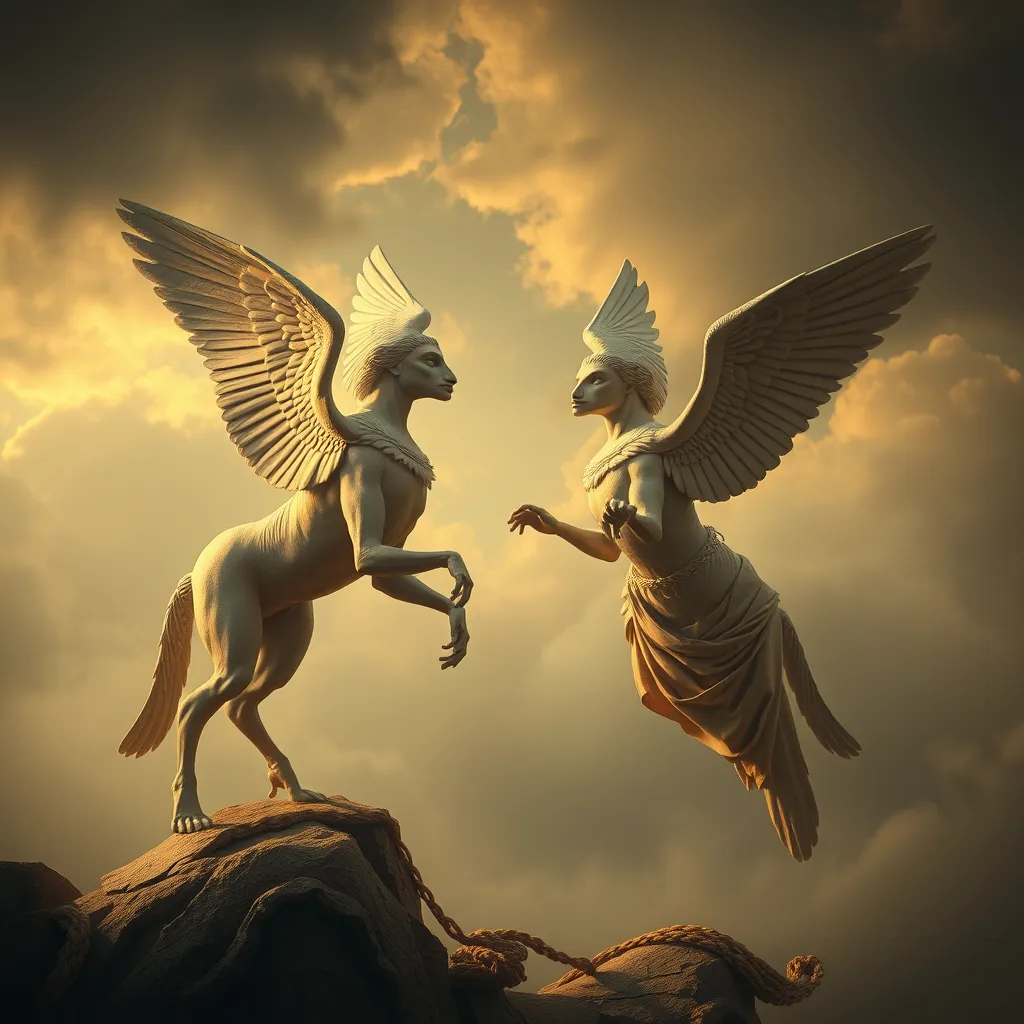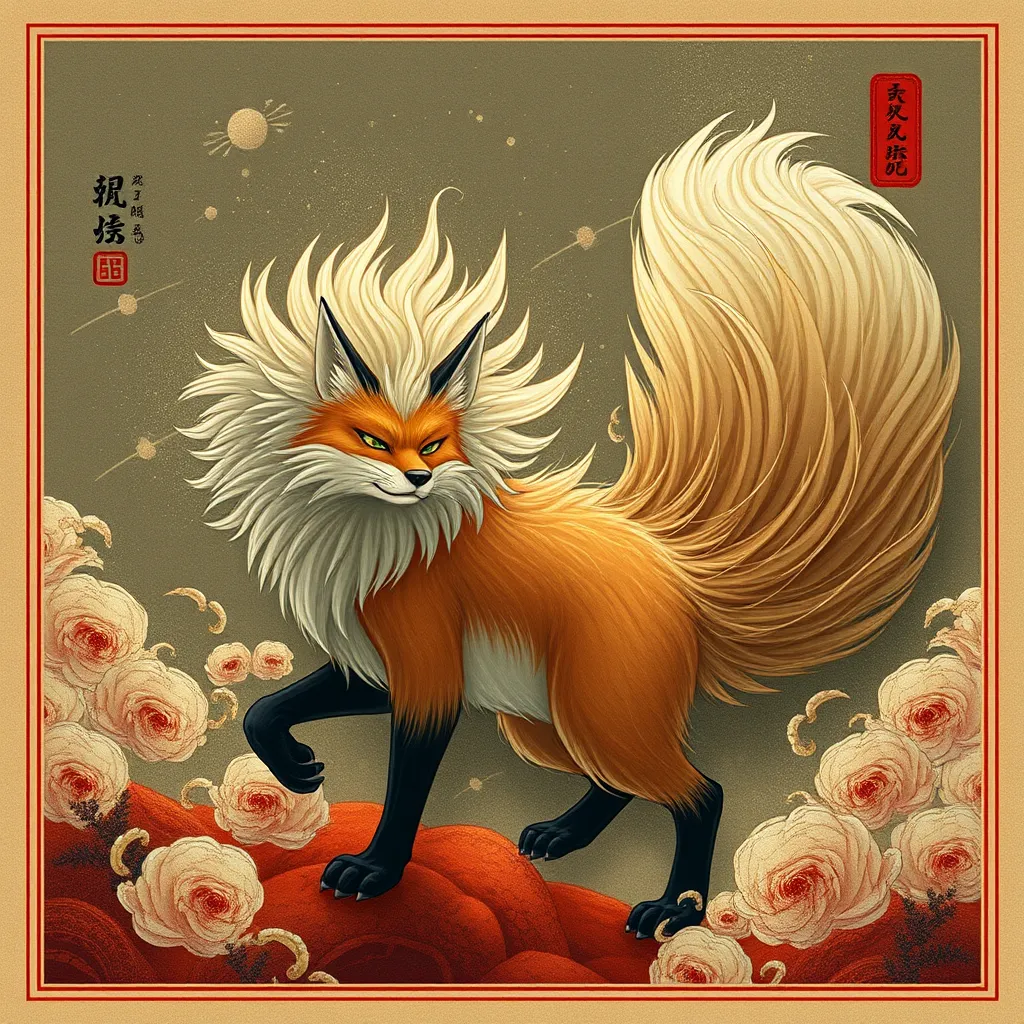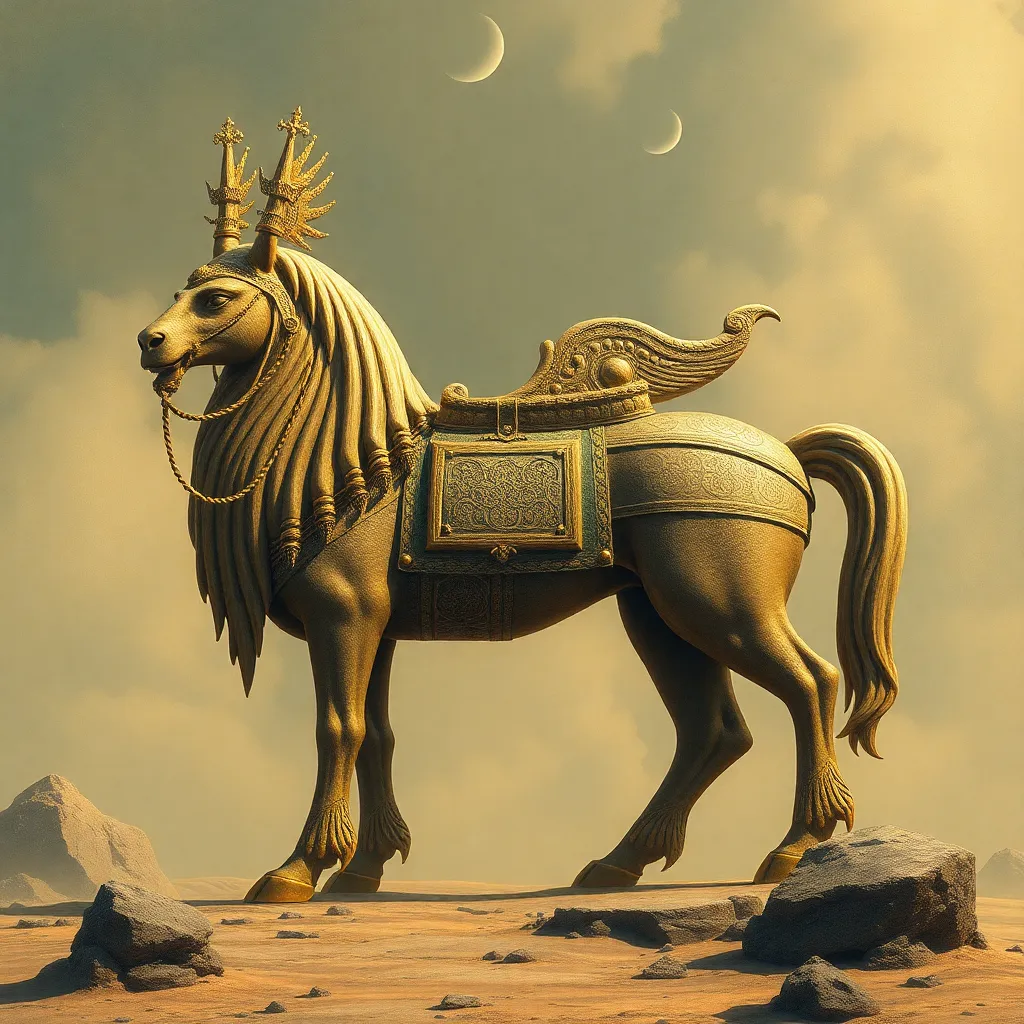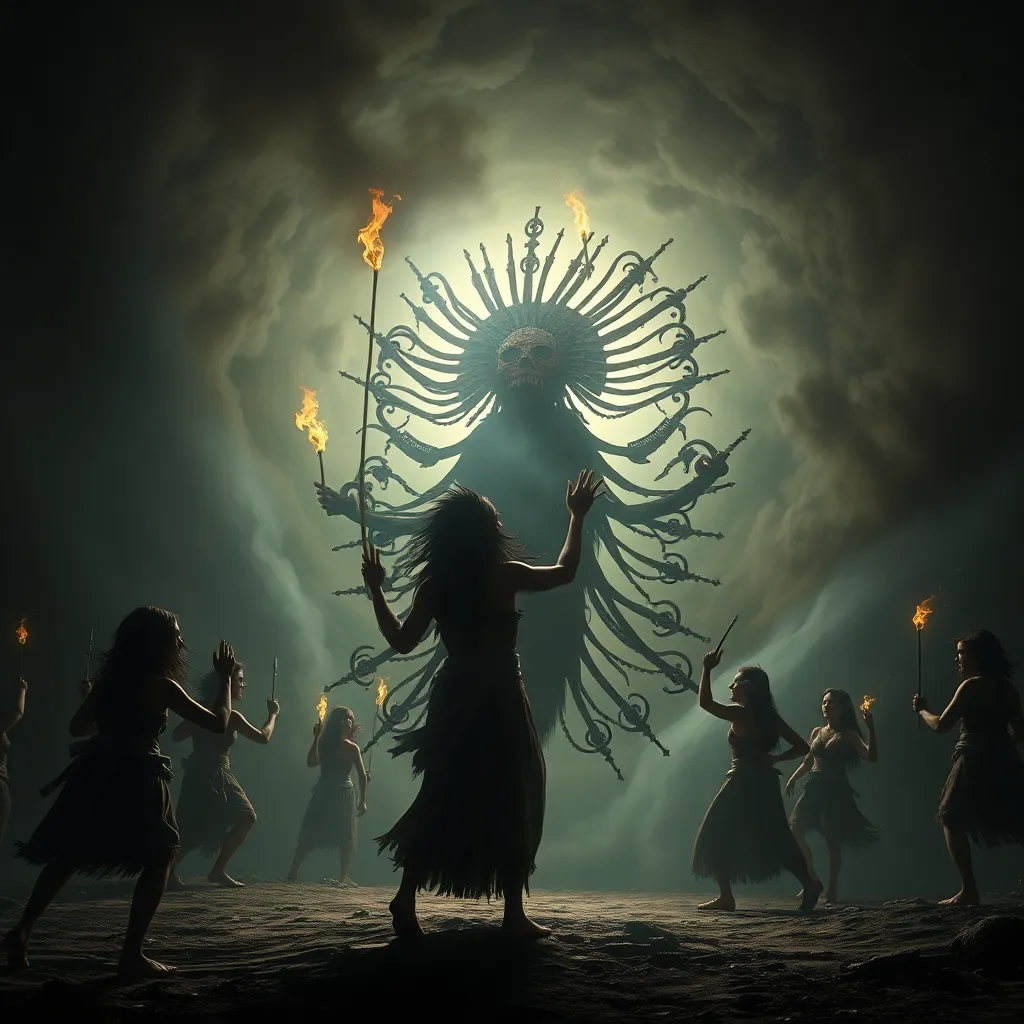The Roman Harpies and Their Connection to Virgil’s Aeneid
I. Introduction
The Harpies, winged spirits known for their fierce and tempestuous nature, have captivated the imagination of audiences since their introduction in ancient mythology. Originating from Greek folklore, these creatures have undergone various interpretations through different cultures, particularly in Roman literature. Among the most significant works to feature the Harpies is Virgil’s epic poem, the Aeneid, which stands as a cornerstone of Roman literary tradition.
This article aims to explore the multifaceted representation of Harpies in the Aeneid, delving into their origins, characteristics, and the thematic implications of their presence within the narrative. By understanding the Harpies’ role in Virgil’s work, we can gain insight into the broader cultural and societal values of ancient Rome.
II. Understanding the Harpies: Origins and Characteristics
A. Description of Harpies in Greek mythology
In Greek mythology, the Harpies are often depicted as half-woman, half-bird creatures associated with storm winds and the violent forces of nature. They are known to snatch away individuals or objects, symbolizing the unpredictability of fate. Initially, the Harpies were considered the personification of the destructive powers of the wind.
B. Evolution of the Harpies in Roman culture
As the Harpies transitioned into Roman culture, their characteristics evolved. They retained their fierce demeanor but were often portrayed with a greater emphasis on their role as agents of divine punishment. In Roman literature, the Harpies became less about nature’s chaos and more about the consequences of human actions.
C. Symbolism and attributes associated with the Harpies
- Agents of Retribution: The Harpies served as enforcers of divine justice, punishing those who violated moral and societal norms.
- Embodiments of Fear: They represented the anxieties of the ancient Romans regarding fate and the unknown.
- Symbols of Despair: Encounters with the Harpies often invoked feelings of hopelessness and dread.
III. The Role of Harpies in Virgil’s Aeneid
A. Introduction to the Harpies in the epic
In the Aeneid, the Harpies make a notable appearance in Book 3, where they confront Aeneas and his crew during their journey to establish a new homeland. Virgil introduces them in a dramatic encounter that highlights their menacing presence.
B. Key scenes featuring the Harpies
One of the key scenes occurs when Aeneas and his men land on the island of Strophades. Here, they face the Harpies, who steal their food and leave a foul stench in their wake. This act not only signifies the Harpies’ role as tormentors but also serves a deeper narrative purpose, emphasizing the struggles the Trojans face on their journey.
C. The significance of their interaction with Aeneas and his crew
The interaction between the Harpies and Aeneas has profound significance. It reflects the challenges and obstacles that Aeneas must overcome, foreshadowing the trials ahead in his quest to fulfill his destiny. Moreover, the Harpies’ curse that they will find a land where they will eat their tables further underscores the themes of fate and retribution that permeate the epic.
IV. Thematic Analysis: Fate, Retribution, and Despair
A. The Harpies as agents of fate
The Harpies embody the concept of fate in the Aeneid. They are not merely tormentors but serve a higher purpose in the narrative, acting as instruments of the divine will. Their actions remind Aeneas and his crew of the unpredictable nature of their journey and the inevitability of fate.
B. Retribution and punishment themes represented by the Harpies
Throughout the Aeneid, the theme of retribution is prevalent. The Harpies represent the consequences of human actions, punishing those who stray from their destined path. This theme resonates with the Roman belief in the importance of piety and adherence to the will of the gods.
C. The sense of despair and hopelessness in encounters with the Harpies
The encounters with the Harpies evoke a sense of despair among Aeneas and his men. Their inability to fend off these creatures symbolizes the larger struggles against fate and the challenges of fulfilling their destiny. The presence of the Harpies serves as a reminder of the dark and uncontrollable forces that exist alongside the pursuit of hope and renewal.
V. The Harpies and the Concept of Divine Intervention
A. The role of the gods in the actions of the Harpies
The Harpies are not independent agents; rather, their actions are influenced by the divine. In the Aeneid, the gods frequently intervene in the lives of mortals, and the Harpies are a manifestation of this divine will. They serve as a reminder that the gods are always watching and that their influence is inescapable.
B. Harpies as messengers of divine will
In many respects, the Harpies act as messengers of the gods, delivering warnings and consequences. Their interactions with Aeneas are laden with divine significance, often reflecting the will of the gods regarding Aeneas’s journey and the fate that awaits him.
C. Comparison with other divine interventions in the Aeneid
Similar to other instances of divine intervention in the Aeneid, the Harpies illustrate the constant interplay between fate and free will. Other characters, such as Juno and Venus, also influence Aeneas’s path, emphasizing the theme that while fate may be predetermined, the journey is fraught with challenges shaped by divine forces.
VI. The Harpies’ Symbolism in Roman Society
A. Cultural perceptions of the Harpies in Roman times
In Roman society, the Harpies were viewed with a mix of fear and fascination. They symbolized the darker aspects of fate and the consequences of moral transgressions. Their depiction in literature and art reflected societal anxieties regarding divine retribution and the importance of virtuous living.
B. The Harpies as a reflection of societal fears and values
The Harpies embodied the fears of the Romans regarding the unpredictability of life and the consequences of human actions. They served as cautionary figures, reminding individuals of the importance of piety and respect for the gods.
C. Influence on Roman art and literature beyond the Aeneid
The influence of the Harpies extended beyond the Aeneid, permeating various forms of Roman art and literature. They were depicted in mosaics, sculptures, and other artistic expressions, often symbolizing the duality of beauty and terror.
VII. Legacy of the Harpies in Literature and Art
A. Depictions of Harpies in subsequent Roman and Western literature
The legacy of the Harpies continues to resonate in subsequent literature. They appear in works ranging from medieval literature to contemporary fantasy, often reinterpreted as symbols of chaos and vengeance.
B. Artistic interpretations of the Harpies through the ages
Artistic representations of Harpies have evolved, with artists depicting them in various styles and contexts. From the grotesque forms in ancient sculptures to the more romantic interpretations in Renaissance art, the Harpies have maintained a presence in the visual arts.
C. The enduring impact of the Harpies on modern storytelling
The Harpies’ influence can be seen in modern storytelling, where they often symbolize the struggle against overwhelming odds. Their legacy as powerful and fearsome entities continues to inspire writers and creators across genres.
VIII. Conclusion
The Harpies play a significant role in Virgil’s Aeneid, serving as multifaceted symbols of fate, retribution, and despair. Their presence not only enriches the narrative but also reflects broader cultural themes within Roman society. As agents of divine will, they remind us of the complexities of human existence and the ever-present influence of the gods.
In reflecting on the Harpies’ legacy, we find that their impact extends far beyond the confines of the Aeneid. Their symbolism resonates through the ages, illuminating our understanding of mythology, literature, and the human condition. The intersection of mythology and literature continues to inspire, revealing the timeless themes that connect us all.



